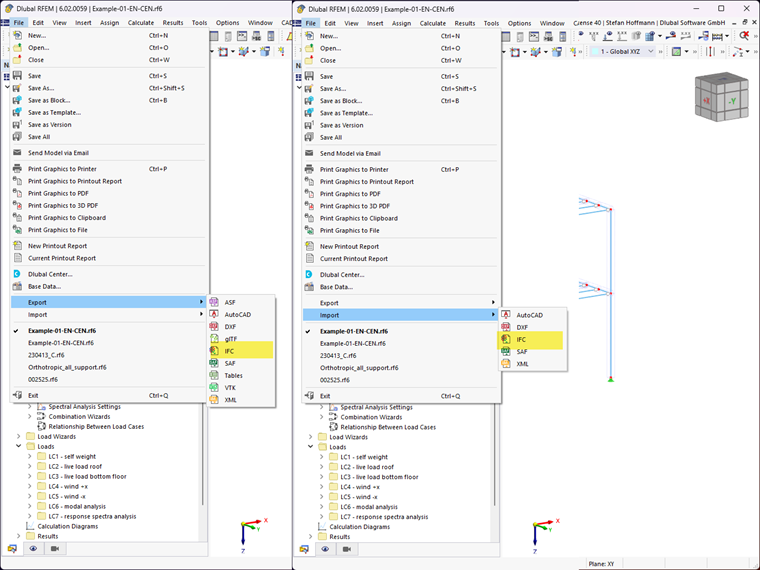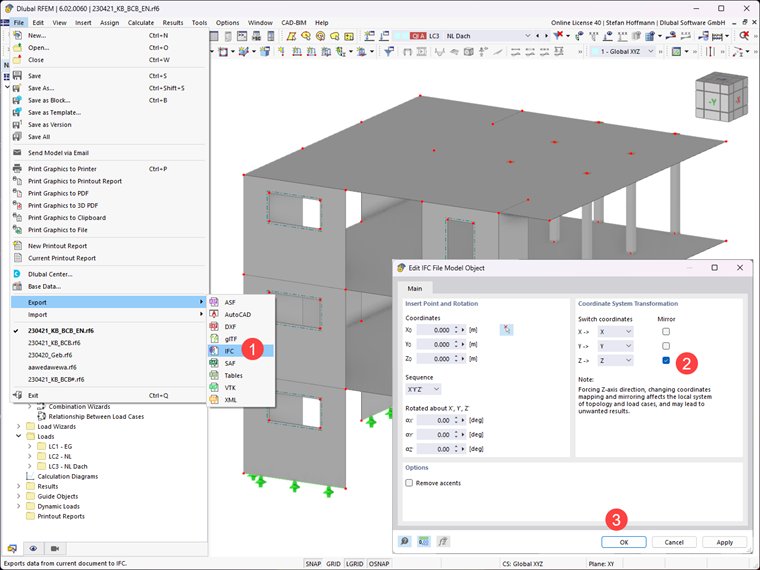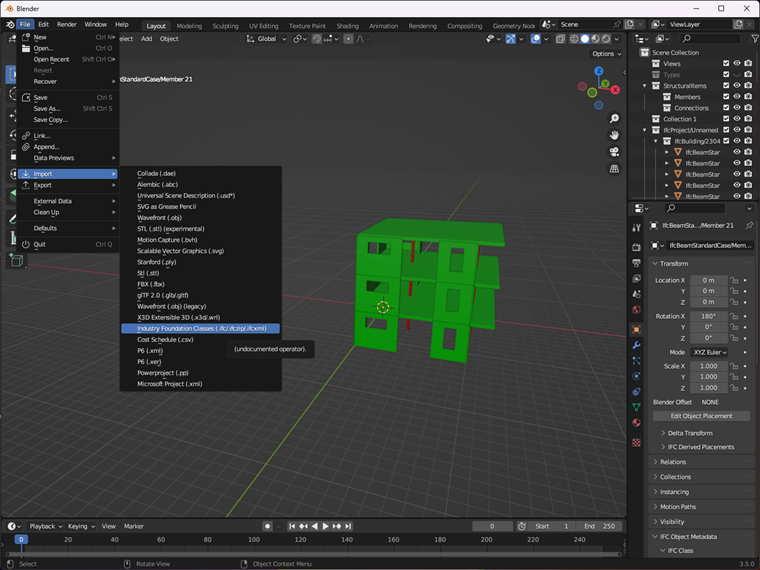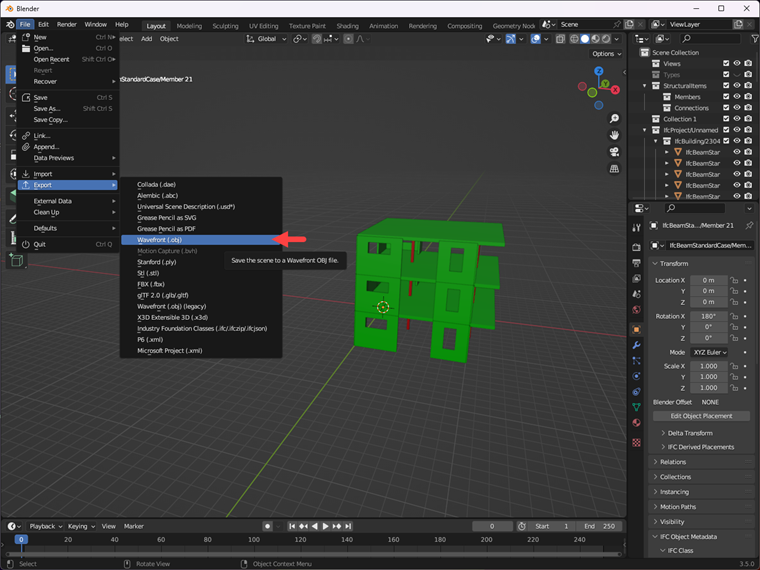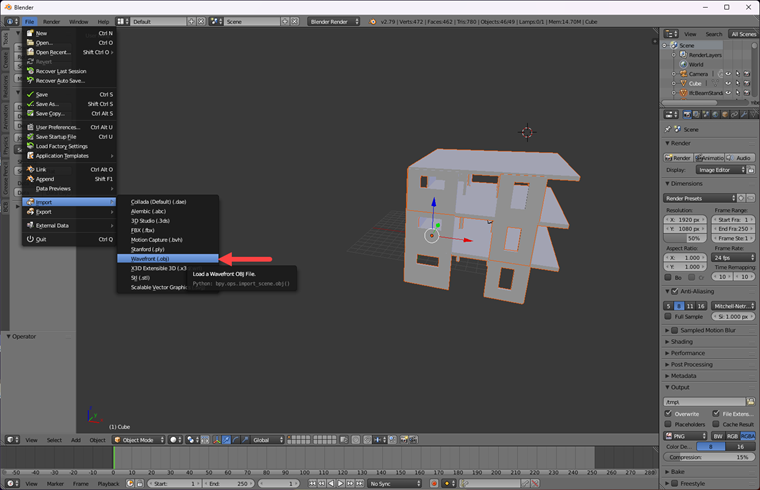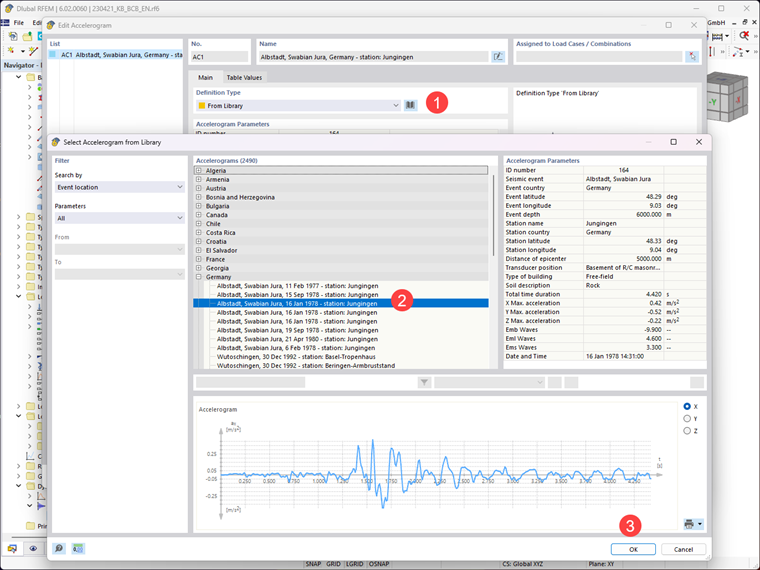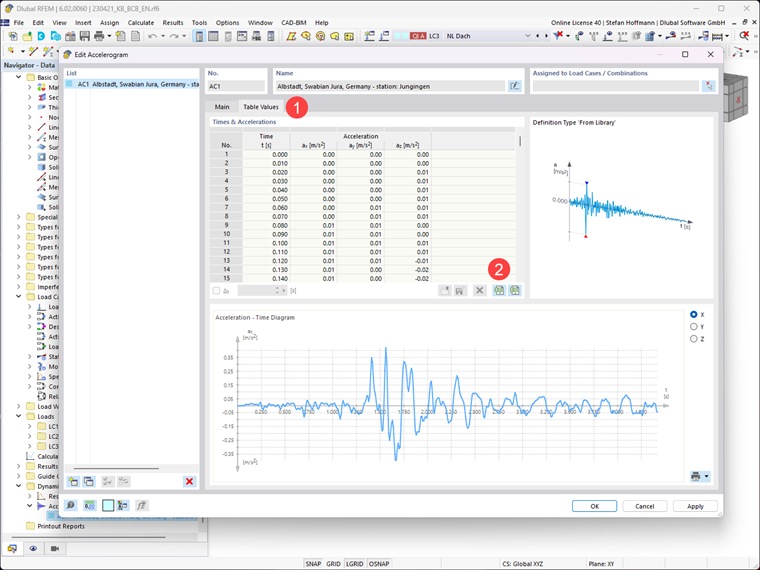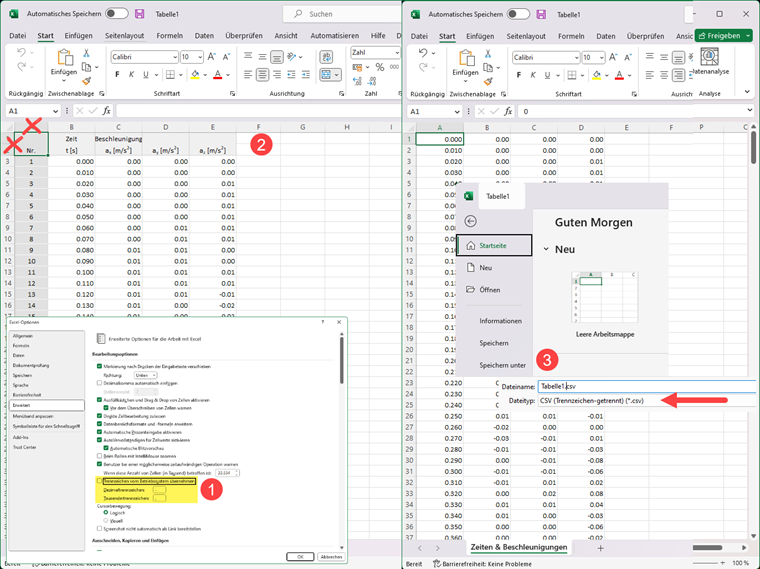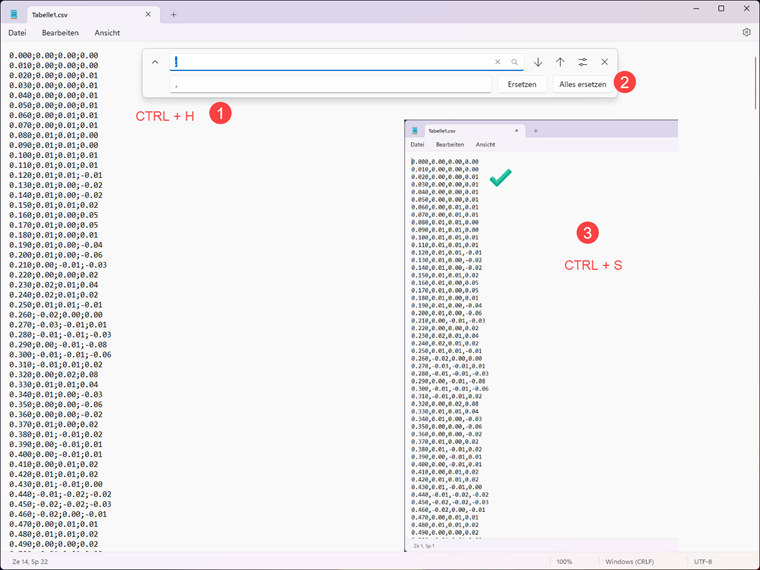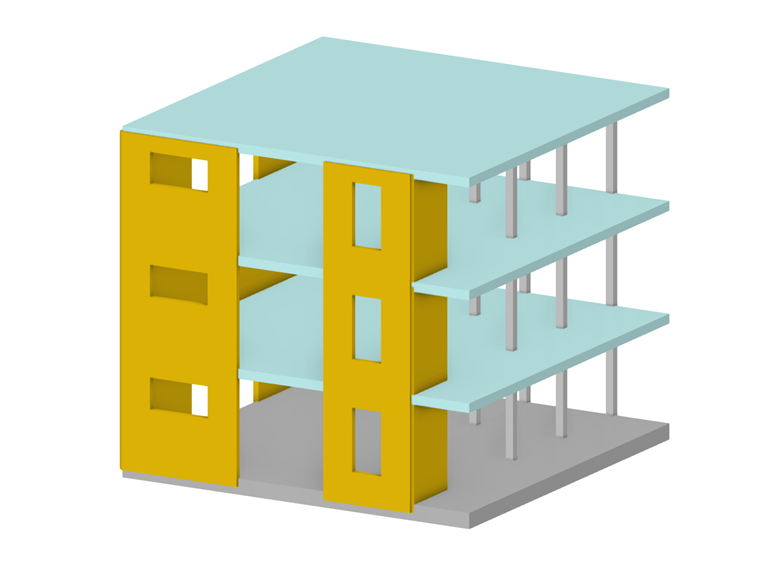Using Dlubal Software, you can generate accelerograms and response spectra that are directly used in seismic analyses performed in the structural analysis program. The analysis is designed to avoid structural failure within the scope of the safety concept. What if a collapse occurs anyway? In this case, a collapse assessment will help you to uncover weak points or to plan protection. You can export any accelerogram from the extensive RFEM 6 library for such purposes to use it further.
However, there is even more. The structural model of your building structure is already available and can be used in other programs. This is where the different interfaces of Dlubal programs come into effect.
Interoperability between structural analysis software and CAD programs is more important than ever. Exchange formats allow you to provide physical and architectural models for both software types. The goal is an intelligent building data model – the BIM model.
Dlubal Software has many different interfaces. One of them is the IFC (Industry Foundation Classes) interface.
Now, you have the 3D model and the acting accelerogram. Are you asking yourself if you can process these data to simulate a collapse?
The answer is yes! An add-on for Blender® is able to model such a simulation using object properties called "constraints". The "Bullet Constraints Builder" (BCB) add-on allows such a simulation. My next article will explain in detail how to use the add-on.
To use the RFEM 6 data, an adjustment to the expected input format is necessary.
Adaptation of IFC for Blender® 2.79
Currently, the BCB add-on is only available for an older version of Blender® (2.79). To use IFC efficiently in Blender®, we recommend installing the current version (3.5) and the BlenderBIM add-on.
- Export the IFC model from RFEM 6.
- Import the IFC model in Blender® 3.5.
- Export the model as an .OBJ file.
- Import the .OBJ file in Blender® 2.79.
Adaption of Accelerogram for Use in BCB
The BCB add-on expects an ASCII text file with comma-separated values (.csv) as the input for the accelerogram. The setting is given by 4 columns (t [s], X [m/s²], Y [m/s²], Z [m/s²]). Lines beginning with # are skipped. To obtain this format, proceed as follows:
- For example, you can load an accelerogram from the library.
- Export the accelerogram to MS Excel.
- Adjust the output according to the specification for BCB (4 columns: t [s], X [m/s²], Y [m/s²], Z [m/s²]) and save the file as .csv.
Using these data, you can start the collapse simulation in Blender®. My next article will explain in detail how to use the add-on.

